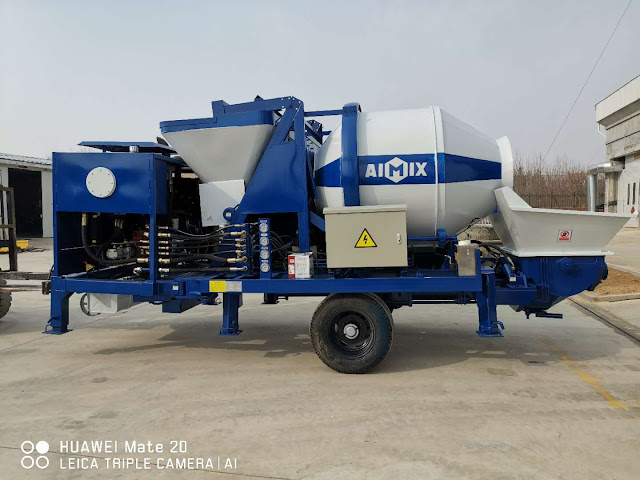Hidden Cost Analysis: The Impact of Transportation, Downtime and Equipment Depreciation on the Total Cost of Asphalt Plants
When investing in an asphalt plant for road and bridge construction, many companies focus on the initial purchase price. However, hidden costs—such as transportation, operational downtime, and equipment depreciation—can have a significant impact on the total cost of ownership. These often-overlooked factors can affect profitability, project timelines, and long-term performance, especially when planning for the use of specialized equipment like a mini asphalt plant or a full-scale asphalt batch plant.
In this blog post, we take a deeper look at how these hidden costs influence your overall investment and operational efficiency. Understanding these elements is essential for contractors, project managers, and business owners aiming to make financially sound decisions in the competitive road construction industry.
Why Hidden Costs Matter in Asphalt Plant Investments
While the asphalt plant price(planta de asfalto precio) is a major consideration during procurement, focusing solely on the upfront cost can be misleading. The real cost of operating an asphalt plant is shaped by a variety of ongoing and indirect expenses. Transportation, for example, not only affects logistics but also determines how quickly a plant can be deployed and start generating returns. Downtime, whether due to maintenance, mechanical failure, or poor logistics, translates directly into lost revenue and delayed project delivery. Depreciation, on the other hand, influences long-term value and resale potential.
Recognizing these costs and factoring them into budget planning will help buyers make more accurate cost assessments and avoid financial surprises down the road.
The Hidden Cost of Transportation
Logistics and Mobilization Expenses
Moving an asphalt plant from the manufacturing facility to the job site can incur significant costs, especially if the plant is large or located in a remote area. Transportation fees can include freight charges, special permits, customs duties (for international purchases), insurance, and even road closures if large components must be moved on public roads. These costs can be especially burdensome for contractors working across multiple regions or in geographically challenging areas.
Site Preparation and Installation
Once the plant arrives, it may require site leveling, foundation work, and utility connections before becoming operational. For an asphalt batch plant(planta de asfalto discontinua), which typically requires a more complex setup, these additional construction and setup costs can be substantial. Even a mini asphalt plant, while more compact, may still need crane rental or mechanical support during installation. These site-specific costs are rarely included in the quoted asphalt plant price but must be considered in total project cost.
Downtime: The Silent Profit Killer
Unplanned Maintenance and Repairs
Downtime caused by mechanical failure, poor maintenance, or wear and tear can be extremely costly. A stalled plant means halted production, delayed paving schedules, and idle labor—all of which result in financial loss. Even temporary disruptions can ripple across a project timeline and increase pressure from clients and regulators.
Older or poorly maintained equipment is especially prone to breakdowns. Contractors must either invest in preventive maintenance or risk the high costs of emergency repairs and delayed project delivery.
Seasonal or Environmental Shutdowns
In some regions, weather conditions can halt asphalt production for weeks or even months. If your plant is not designed to withstand such conditions or cannot be relocated easily, downtime becomes inevitable. This is particularly relevant for stationary asphalt batch plants, which are less flexible than portable models or mini asphalt plants(mini planta de asfalto) designed for temporary or remote operations.
Depreciation and Long-Term Value Loss
Equipment Aging and Technological Obsolescence
Like any heavy machinery, asphalt plants lose value over time. The depreciation rate depends on several factors, including usage frequency, maintenance quality, and how quickly newer, more efficient technology becomes available. An outdated plant may cost more to operate and be less appealing to potential buyers if resale becomes necessary.
While a mini asphalt plant may depreciate at a slower rate due to lower operational intensity, full-scale plants can lose a significant portion of their value within just a few years—especially if poorly maintained.
Resale Market Limitations
Not all asphalt plants retain good resale value. Factors such as regional demand, availability of parts, and emission standards can limit your options when it's time to sell or upgrade. A buyer who didn’t initially factor in depreciation might find themselves stuck with equipment that has lost most of its value, or that requires expensive refurbishment before being marketable.
Managing Hidden Costs for Long-Term Success
Understanding and planning for hidden costs is crucial for maximizing return on investment. Here are a few strategies:
-
Choose the Right Size and Type: A mini asphalt plant may offer lower transport and installation costs, and more flexibility, while a high-capacity asphalt batch plant is better suited for large-scale, long-term projects.
-
Invest in Quality and Maintenance: Spending more on a high-quality plant upfront can reduce maintenance-related downtime and improve long-term reliability.
-
Plan for Depreciation: Understand the resale market and maintain detailed service records to preserve resale value.
Conclusion
While the asphalt plant price is an important factor, transportation, downtime, and depreciation often determine the real cost of ownership. These hidden costs can be managed through strategic planning, quality investment, and ongoing maintenance. For construction professionals in the road and bridge sector, evaluating the full financial picture—including the impact of hidden expenses—is essential for making wise, cost-effective decisions in today’s competitive environment.




Comments
Post a Comment